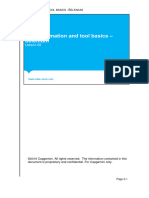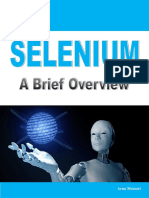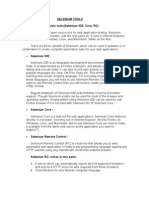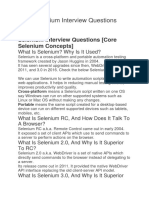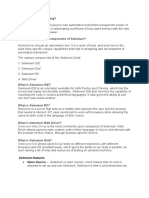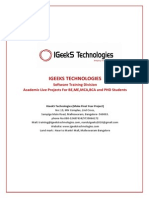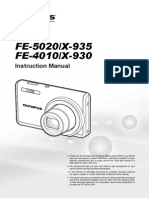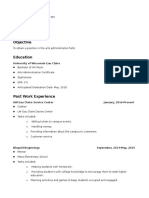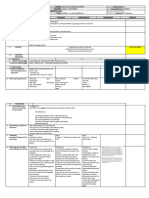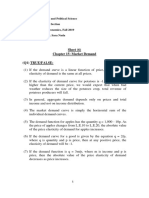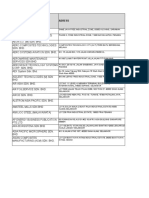What is Selenium?
AHMET BESKAZALIOGLU 1
�Outline of the Article
1. Introduction to Selenium
2. History and Development
3. What is Selenium Used For?
4. Components of Selenium
• Selenium IDE
• Selenium WebDriver
• Selenium Grid
5. Advantages of Using Selenium
6. Getting Started with Selenium
• Installing Selenium
• Setting up Selenium WebDriver
7. Writing Your First Selenium Test
8. Selenium Best Practices
• Maintainable Test Scripts
• Locators Strategy
• Synchronization
9. Selenium Automation Frameworks
• Data-Driven Framework
• Keyword-Driven Framework
• Hybrid Framework
10. Selenium Integration with Other Tools
11. Challenges in Selenium Testing
12. Future Trends in Selenium
13. Conclusion
14. FAQs
AHMET BESKAZALIOGLU 2
�Mastering Selenium: Empowering Software
Developers
1. Introduction to Selenium
Selenium is a powerful open-source tool primarily used for automating web applications for
testing purposes. It provides a platform-agnostic way of interacting with web browsers, enabling
developers to write tests in various programming languages like Java, Python, C#, etc.
2. History and Development
Selenium was originally developed by Jason Huggins in 2004 as an internal tool at
ThoughtWorks. It was later open-sourced in 2008, leading to the development of Selenium
WebDriver, which revolutionized web testing automation.
3. What is Selenium Used For?
Selenium is predominantly used for automating web application testing. It allows developers to
simulate user interactions with web elements, such as clicking buttons, entering text, navigating
through pages, and validating expected behavior.
4. Components of Selenium
Selenium IDE
Selenium Integrated Development Environment (IDE) is a Firefox plugin used to record and
playback browser interactions. It's useful for quick prototyping and creating simple test scripts.
Selenium WebDriver
Selenium WebDriver is the core component of Selenium, providing a programming interface to
create and execute test cases across different browsers. It allows developers to interact directly
with the browser, making it more robust and flexible than Selenium IDE.
Selenium Grid
Selenium Grid facilitates running tests in parallel across different machines and browsers
simultaneously, making test execution faster and more efficient.
AHMET BESKAZALIOGLU 3
�5. Advantages of Using Selenium
• Cross-browser Compatibility: Selenium supports browsers like Chrome, Firefox, Safari, and
Edge, ensuring consistent testing across different environments.
• Language Support: Developers can write tests in their preferred programming language,
enhancing flexibility and productivity.
• Community Support: Being open-source, Selenium has a vast community of developers
contributing to its growth and providing support.
• Integration: Selenium can be easily integrated with other tools and frameworks, making it
suitable for complex testing scenarios.
6. Getting Started with Selenium
To start using Selenium, you must install the necessary drivers for the browsers you intend to test
and set up the Selenium WebDriver in your preferred programming environment.
7. Writing Your First Selenium Test
Let's write a simple Selenium test in Java:
AHMET BESKAZALIOGLU 4
�8. Selenium Best Practices
Maintainable Test Scripts
Write clean and modular test scripts to ensure ease of maintenance and scalability.
Locators Strategy
Use reliable locators like ID, CSS selectors, or XPath to identify web elements, avoiding brittle
tests.
Synchronization
Implement proper synchronization techniques to handle dynamic web elements and ensure test
stability.
9. Selenium Automation Frameworks
Data-Driven Framework
Separate test data from test scripts, allowing for easy data manipulation and scalability.
Keyword-Driven Framework
Abstract test actions into keywords, promoting reusability and maintainability.
Hybrid Framework
Combine the strengths of both data-driven and keyword-driven frameworks for comprehensive
test automation.
10. Selenium Integration with Other Tools
Selenium can be seamlessly integrated with Continuous Integration (CI) tools like Jenkins, test
management tools like TestNG, and defect tracking systems like JIRA, enhancing the testing
workflow.
AHMET BESKAZALIOGLU 5
�11. Challenges in Selenium Testing
Common challenges include handling dynamic elements, managing test data, and achieving
cross-browser compatibility.
12. Future Trends in Selenium
The future of Selenium lies in AI-powered testing, enhanced integration with DevOps practices,
and improved support for emerging web technologies.
13. Conclusion
Selenium remains a cornerstone in the arsenal of software developers for web application testing.
Its flexibility, scalability, and robustness make it indispensable in ensuring the quality and
reliability of modern web applications.
14. FAQs
1. Is Selenium only for web testing?
• Yes, Selenium is primarily used for automating web application testing.
2. Which programming languages are supported by Selenium?
• Selenium supports multiple programming languages like Java, Python, C#, etc.
3. Can Selenium tests be run in parallel?
• Yes, Selenium Grid allows running tests in parallel across different browsers and
machines.
4. How frequently is Selenium updated?
• Selenium releases updates regularly to adapt to evolving web technologies and address
bugs.
5. Is Selenium suitable for mobile application testing?
• While Selenium is primarily for web testing, there are frameworks like Appium that
extend Selenium's capabilities to mobile testing.
AHMET BESKAZALIOGLU 6
















